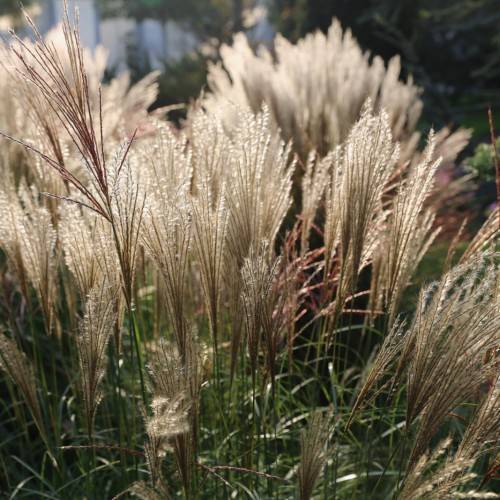
eulalia
Miscanthus sinensis 'November Sunset'
Cycle:
Perennial
Watering:
Average
Hardiness Zone:
5 - 9
Flowers:
Flowers
Sun:
Full sun,part shade
Leaf:
Yes
Growth Rate:
Low
Maintenance:
Low
Drought Tolerant:
Yes
Salt Tolerant:
Yes
watering
November Sunset eulalia (Miscanthus sinensis 'November Sunset') should be kept evenly moist. Water every 7 to 10 days during the growing season and less often during winter when the foliage is dormant. Overwatering can cause root rot and kill the plant. Add 1 inch of water to the soil, or enough to keep the top 3 to 6 inches of soil moist. Check the plant's soil level during hotter weather; in this case, increase the frequency of watering.
sunlight
Eulalia (Miscanthus sinensis 'November Sunset') thrives in full sun, meaning the plant should be exposed to at least 6 hours of direct sunlight each day. Early morning or late afternoon sun is best, as the hot, midday sun can cause scorching of the foliage. Although it is tolerant of light shade, it will not flower or perform its best if grown in too little sunlight.
pruning
Eulalias should be pruned annually, immediately after they finish blooming in the fall or as late in the season as possible. Pruning should remove damaged, diseased, or dead growth, as well as any excess flowers or seed heads. Pruning should be done lightly, only removing up to 1-third of the overall height of the plant. If pruning back too much, budding growth may be affected and the following season's bloom may be compromised. To help keep the plant shapely, prune off any shoots that are growing outside of the main shape of the plant. Additionally, thinning out the grass within the center of the clump can help to reduce crowding and clumping and create a fuller, more uniform appearance.
